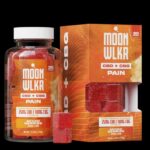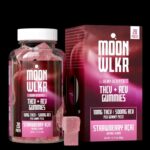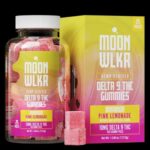Hemp is the only known plant that contains phytocannabinoids like CBD. However, botanists have discovered the non-cannabinoid compounds in cannabis are the same as those in many herbs, spices, and fruits. This is especially true for chemicals known as “terpenes,” which give hemp strains their unique aromas.
For example, bisabolol is a common secondary terpene in cannabis that’s also found in the chamomile flower. Indeed, most estimates suggest bisabolol is primarily responsible for the honey-rich scent found in chamomile tea. It also appears hemp strains with high traces of bisabolol share the many benefits people often ascribe to chamomile-containing beverages and topicals.
How Does Bisabolol Make Hemp Flowers Smell?
As mentioned in the intro, bisabolol is closely associated with the chamomile flower. Although you may find bisabolol in other herbs, it’s easiest to describe its standard aromatics by comparing it with a warm cup of chamomile tea.
For those who’ve smelt chamomile before, you’ll know it has a distinctive floral scent with a hint of sweetness. Some people also pick up hints of citrus, honey, and spice in chamomile cultivars. Unsurprisingly, you could find many of these aromatic qualities in hemp strains with high bisabolol percentages.
Just remember that bisabolol is a “secondary terpene.” Unlike limonene or myrcene, it’s difficult to find CBD hemp strains where bisabolol has a dominant terpene percentage. Generally, bisabolol will play a supporting role in a full-spectrum CBD oil’s flavor. You may still notice bisabolol’s flavors and effects, but they will be mixed with other more prominent terpenes.
Does Bisabolol Have Any Unique Benefits?
Some readers may already know that chamomile tea has a long history in folk medicine. Most significantly, people brew chamomile tea to overcome digestive issues like bloating, IBS, and diarrhea. Recent studies strongly suggest a glass of chamomile tea per day can help reduce mild to moderate digestive discomfort. Some scientists believe bisabolol’s anti-inflammatory impact may be responsible for chamomile’s beneficial effect on digestion.
Along with digestive wellness, chamomile shows potential as a natural sleep aid. Customers may have noticed most herbal teas that contain chamomile are often marketed as “sleep-promoting” products. Preliminary trials suggest chamomile tea has naturally relaxing and sedating properties. Since bisabolol is the top terpene in chamomile, it makes sense that it would contribute to a CBD strain’s soothing properties.
It’s also worth mentioning that bisabolol is commonly used in skin-safe creams, balms, and topicals. Many dermatologists believe chamomile has healing properties for common skin conditions like acne, eczema, and bug bites. Apparently, the anti-inflammatory traits in bisabolol contribute to chamomile’s positive effect on skin health.
How Can Hemp Customers Find Bisabolol In Their CBD Products?
Please remember that bisabolol probably won’t be the top terpene in your CBD product. Unless manufacturers add extra bisabolol to their formulations, this terpene isn’t naturally dominant in any hemp strain. So, if you’re ordering full-spectrum CBD extract or a hemp pre-roll, chances are you won’t see a ton of bisabolol on lab reports.
However, you can check a hemp product’s third-party lab results to see how much bisabolol is present. Also, please don’t forget that many CBD sleep supplements contain traces of chamomile. If you want the highest bisabolol concentrations in your CBD products, you may want to focus on CBD supplements in the “sleep health” category.
To learn more about how to evaluate CBD oils for purity, please review the data on Real Tested CBD. On our site, you’ll find dozens of unbiased reviews on some of the leading CBD brands in North America.
Most Recent Tested products

















Leave a Comment